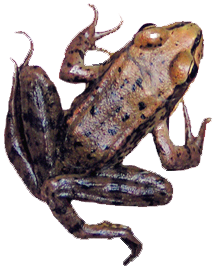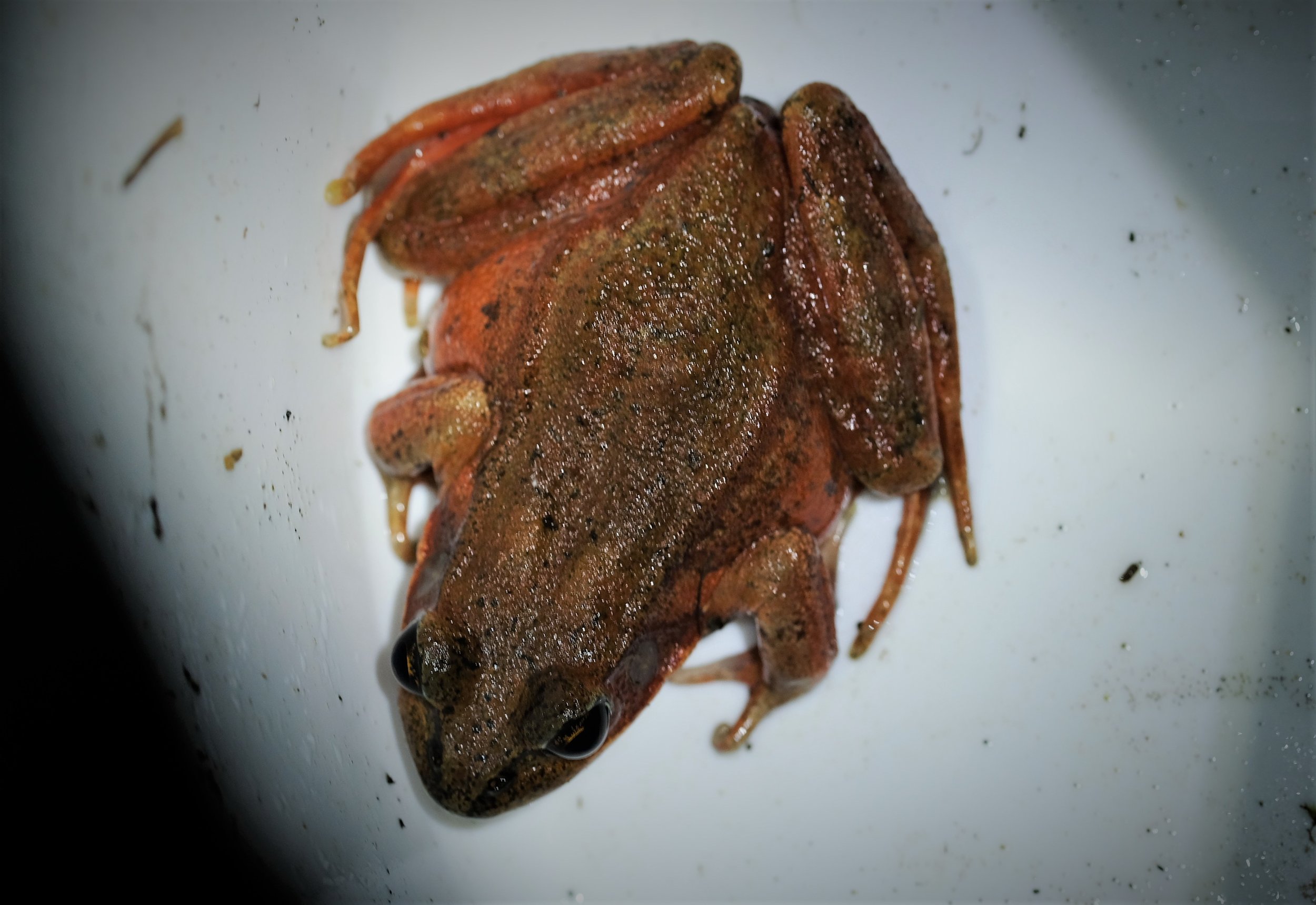It’s been a strange frog season. At the moment we haven’t seen a frog in 29 days, the temperature a few degrees too cold each night, the rain at dusk fitful, nonexistent, and then steady late at night, when large migrations are less likely than they are at nightfall. (A reminder: red-legged frog movements are most likely when the temp is above 45 F, dark, and rainy.) Of course there was almost a week of snowy conditions in mid-February, which is not unusual, the frogs dealing with it by burrowing more deeply into the duff, or in other underground havens. There were only four nights in January with more than ten frogs caught, one substantial night on December 29 with 181, but that’s pretty much it; only 420 frogs caught going down to the wetland. Last year there were 834, the numbers ranging from 580 to 688 the previous three years. A 400 frog drop from last year is alarming.
Of course this could change radically in one night, with hundreds hitting the pavement, but it feels odd this year. On marginal nights, with borderline temps and drizzle, when we could usually expect to catch at least a few, all we see is glistening blacktop. Also, since the third year of frog catching, the little suckers seem to be trying to avoid us, flanking us to the north and south, places we’d rarely seen them the first two years. Maybe this year they’re trying to avoid us by patiently staying under the licorice ferns until all our headlamps, scouring the road down below them, have gone away, then crossing the highway later at night. The traffic lightens as the night wears on, so they’d have a better chance of crossing unscathed, but still there would be mortality. I ride a bike on the highway most every day and I’ve not seen any sign of dead frogs, nor noticed the lingering, fishy smell of squashed hopster. So no, probably no late night crossings. This is the kind of wishful thinking -- the population intact! -- I indulge with so few frogs showing up.
We’ve received word from a PGE biologist Jane Hartline happened into that they’ve counted 160 red-legged egg masses in the wetland, a figure that roughly corresponds to our data for the year. So our numbers are likely an accurate reflection of the migration. Hopefully a big night will change this awful foreboding of population decline, but only time will tell. Our resolute researchers -- who will be studying frog dispersal back up in the forest (see the blog dated ) -- are nearing the end of their permitting and are joining us in the rain. They may, by pinpointing where the frogs live in the forest, point toward a cause for the decline (if it’s indeed happened), as we’ve recently learned the city has been spraying herbicides up in this watershed. It’s ironic that at the same time we’re careful about having clean hands, so that we don’t get hand lotion or other chemicals on the permeable skin of the frogs.
photo: Muriel Wentziel

